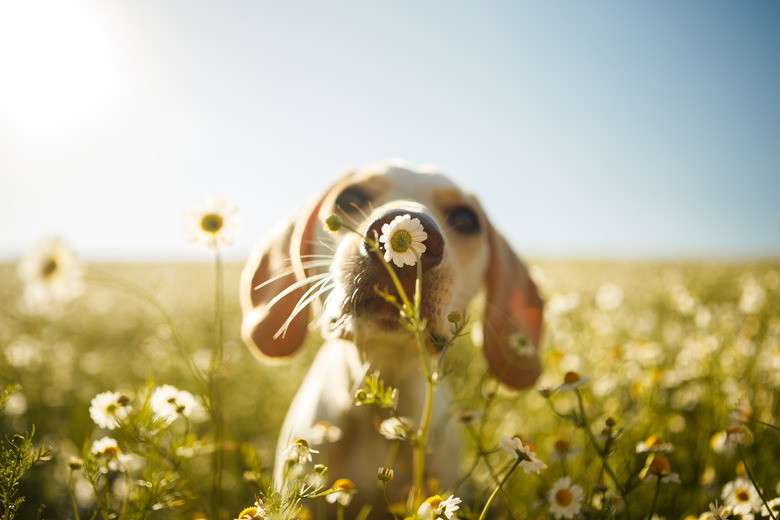How Are Animals & Plants Similar?
When you look at a family pet, such as a dog or cat, and then look at a plant, it may be hard to see any similarities between the two. However, even though a dog may not seem to have much in common with a potted cactus, animals and plants share a lot in common. Both plants and animals are living things, which means that they are both made of cells, both have DNA, and both require energy to grow.
TL;DR (Too Long; Didn't Read)
Plants and animals both have cells, both have DNA, and both require energy to grow. Even though plants and animals don't appear to have a lot in common, they are at least as similar as they are different.
Plants and Animals Have Cells
Plants and Animals Have Cells
Living things are made up of tiny structural units called cells. Extremely simple living things (called single-cell organisms) may contain only one cell, while complex living things, such as human beings, contain trillions. There are some important differences between plant and animal cells. Plant cells contain cell walls, which keep them firmly in place, while animal cells do not. Some animal cells have protrusions called cilia, which help them move around. Plant and animal cells contain different organelles, which are tiny structures inside the cells that perform different functions. However, both plant and animal cells serve the same basic functions. They divide over time so that plants and animals can change and grow. They also allow plants and animals to absorb nutrients and convert those nutrients into energy.
Plants and Animals Have DNA
Plants and Animals Have DNA
Believe it or not, plants and animals are related. All life on earth, both plants and animals, shares a common ancestor. Your dog and you yourself are related to the grass growing on your lawn. Scientists know this because of DNA, which is sometimes referred to as the "building blocks" or "blueprints" of life. Stored in the nucleus of every cell of every living thing, DNA is a long chain of amino acids that form together in ways to create a specific living thing.
DNA is the carrier of genetic information in living things. It is the reason that a dog only gives birth to other dogs and that an apple seed only grows apple trees. Both plants and animals have DNA in their cells. By sequencing plant and animal DNA, which involves looking carefully at the chains of amino acids to see how they are put together, scientists can see just how closely living things are related. A genetic test can prove that you are closely related to your family members. It can also prove that you and all animals are related to plants, even though the relation is extremely distant. Scientists estimate that plants and animals split paths from their common ancestor around 1.6 billion years ago. Without DNA, it would not be possible for them to know this.
Plants and Animals Need Energy
Plants and Animals Need Energy
Eating food and drinking water might not seem all that complicated, but the cellular processes that take place every time you do so are complex. It boils down to this: Cells convert the nutrients in your food and water into usable energy for your body. Your body needs energy to grow and keep your organs running. Without the proper amount of energy, small human children could not develop into adults. From your beating heart to the firing neurons in your brain, your organs require energy to function properly no matter your age. Just as your body gets this energy from the food and beverages you consume, plants also get their energy from the world around them.
Although plants don't eat the way animals do, they still must have energy to grow and function properly. Plants absorb some nutrients via their roots, but most plants also absorb energy from sunlight through a process called photosynthesis. Because of plastids present in a plants' cells, they are able to break sunlight down into usable energy, the same way we do with food.
Animals and plants may not seem much alike at first glance, but because they are both living things, they have a lot in common, and they require some of the same things to remain healthy.
Cite This Article
MLA
Cook, Maria. "How Are Animals & Plants Similar?" sciencing.com, https://www.sciencing.com/animals-plants-similar-5438233/. 11 April 2018.
APA
Cook, Maria. (2018, April 11). How Are Animals & Plants Similar?. sciencing.com. Retrieved from https://www.sciencing.com/animals-plants-similar-5438233/
Chicago
Cook, Maria. How Are Animals & Plants Similar? last modified March 24, 2022. https://www.sciencing.com/animals-plants-similar-5438233/
